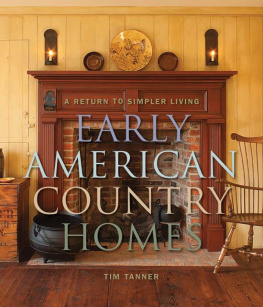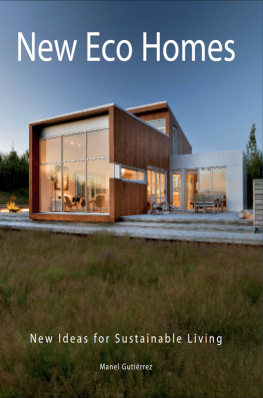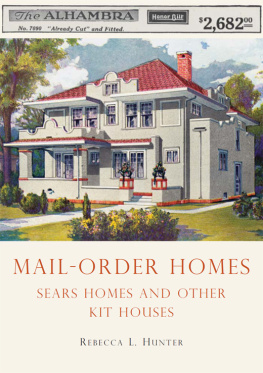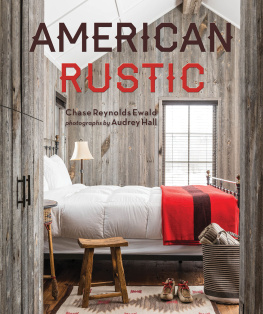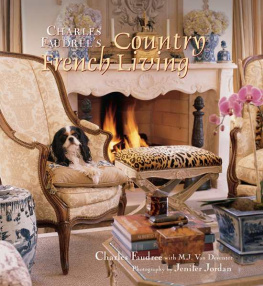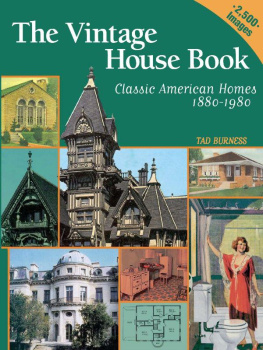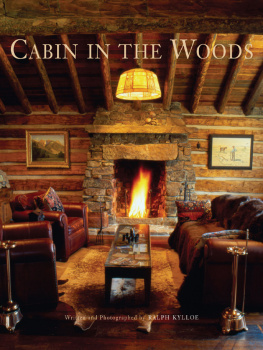To Dad, Mom, and an innumerable list of Ancestorswho left me a rich heritage; To Johnna, McKeand, Molly, and Noahwho support me in my pursuit of dreams; and to my Progenyreflect often on your noble origins.
...And he shall turn the heart of the fathers to the children, and the heart of the children to their fathers...
Acknowledgments
It is said that it takes a community to raise a child. Tis certainly the case to create a book, as well.
First of all, my thanks go to Gibbs Smith, for allowing me this opportunity, and to editors Bob Cooper and Madge Baird, for taking my proverbial sows ear of literary skills and bringing them closer to the vicinity of a silk purse.
Johnna, my wife, deserves the Superhuman Award for her support, patience, and contributions.
Immeasurable gratitude goes to David T. Smith, Noah H. Bradley III, and Denny Walker, who so helpfully directed me to many of the homes in this book. Words cannot express my admiration and appreciation for not only their work, but for their warm personalities as well.
Brian Brown is the recipient of a mountain of my sincerest thanks. The best photographs in this book are undoubtedly hisand if I took a few good ones, the credit goes to his abilities as a teacher. Im also appreciative of the folks at Old Sturbridge Village and the LDS Church historic sites for their kindness in letting us photograph at those wonderful locations.
Lastand far from leasta huge, warm thank you to the owners of each of the following homes. I have loved seeing your dwelling places, and treasure you as newfound friends. Thank you so much!
Tim Tanner
Introduction
Home. This one word alone conjures up countless images, thoughts, and emotions. It is said that a picture is worth a thousand words, but some words in the English language say so much more than just a simple definitionlike the word home. In this case, the word invokes a thousand pictures, and although the images are slightly different for each of us, all of them are personal, warm, and comfortably cozy. Not only do we envision images from the recesses of our minds, but sounds, smells, even feelings begin parading across the stage of our consciousness. A warm, crackling fire in the hearth; a soft, overstuffed chair; Grandpa raking crimson and golden leaves in the crisp autumn air; pumpkins, corn stalks, and hot cider; pancakes smothered in warm maple syrup; a knowing smile on the face of a loved one. Home is something down deep inside each of us, tucked into a very special place.
Our current modern world is not exactly cozy. Oh, there are aspects of our modern living that are especially praiseworthyhot showers, indoor plumbing, automatic dishwashers. My bet is that if our ancestors could trade places with us, most would jump at the chance. But our modern world comes with its own set of challenges. Many twenty-firstcentury inventions have been developed to save us time and simplify our lives. Cell phones, Wi-Fi Internet service, cars that automatically lock the doors for us...the list goes on and on. I dont know about you, but my life doesnt seem simplified by the technological advances. In fact, although Im happy to have it, all of the technology often makes me yearn even more for simplicity. How many modern homes ironically display those little (or big) countrified signs that read Simplify?
When it comes to pointing out the drawbacks of technology, I am perhaps the last person who should be calling the kettle black, sitting here typing on my iMac and processing digital photos for this book. But I often ask myself, Why is it that I am so drawn to simple, historical buildings, furnishings, and stylesand why am I not alone? Antiques have long had an appeal to some eyes (at least in the last 100 years or so), but beauty is in the eye of the beholder, right? So why do some of us go gaga over an old, beat-up, half-broken, paint-worn, unsophisticated cabinet, chair, or box?
Could Someone Please Stop the Train?
Somewhere deep down inside of us, we all yearn for peacesimple, quiet, calm peace. If we look in a dictionary, we wont find the word home as a synonym for peace, but in our inner consciousness, those words all belong together: simple, calm, home, peace, quiet. Could our modern innovations make us long even more for peace, quiet, and home? Could the contrast of our modern, hectic world make peaceful surroundings even more desirable? I recently completed the building of a very simple, spare, primitive cabin. It is only 16 feet wide and 18 feet longhardly palatial. There is no piece of furniture in it worth more than 100 dollars or so. Envision Lifestyles of the Rich and Famous then dash to the opposite end of the spectrum and youll be pretty close. Yet the comments that I hear when folks see it for the first time are, Can I just stay here forever? or, You know, this is all a person really needs. Could it be that the more our world becomes technologically advanced, the more peaceful untechnologically advanced will feel to us? Could this be part of the reason why primitive, homey, worn articles and edifices continue to increase in demand and value?
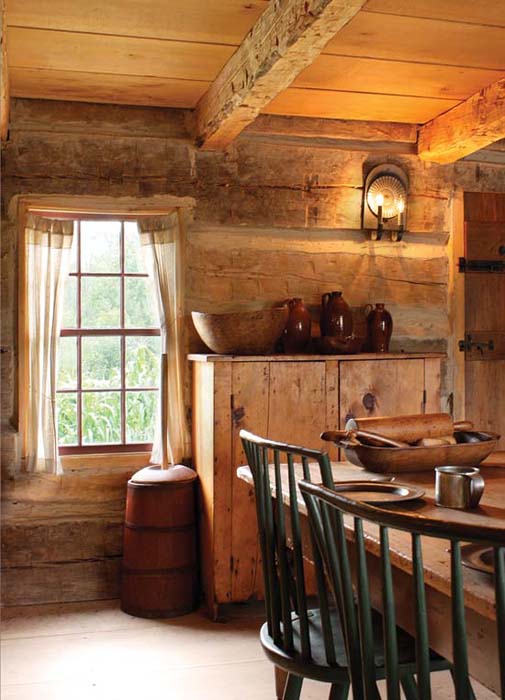
Principles of Design
There are timeless, universal visual principles that have existed throughout the history of mankind. These principles, if used by someone who understands them, will make any visual item pleasing to the human eye. Most of us do not know their names, nor even realize that we are seeing applications of these principles, yet something in our brains recognizes them. For thousands of years, people have studied these principles. They were known amongst the ancient Greeks and Romans, and in ancient Egyptian and American cultures. They were rediscovered during the Renaissance and the Age of Enlightenment by men like Palladio and Thomas Jefferson. Therein we find the link to Early American architecture. While the humble, hewn-log home of an early Kentucky settler or the timber-framed structures of New England may seem very far removed from the Parthenon, these structures share many common design features, because those who influenced the architectural styles of their eras, such as Palladio and Jefferson, were aware of these classic principles. Though a farmer in backwoods Maine or Pennsylvania 200 years ago may not have known the principles by name, he was aware of the prevailing architectural styles and built his structures in accordance. Today we recognize those principles in use amongst early American settlers, and they are just as pleasing to the modern eye as they were 200 (or even 2,000) years ago.
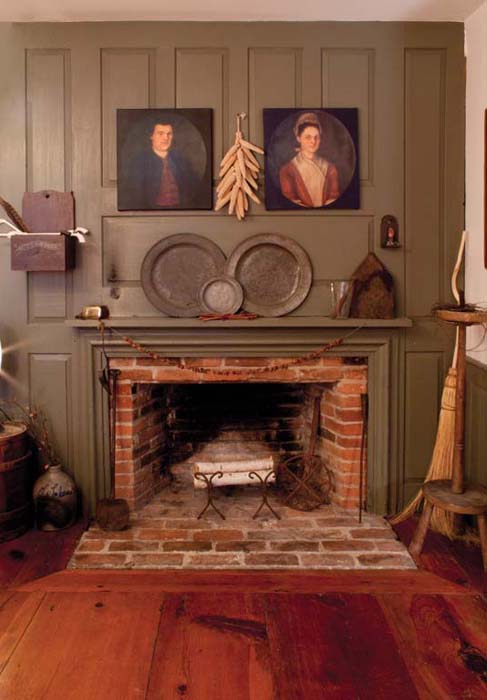
Photograph 2011 Brian Brown.
Personality
One of the joys of living in a country home is the creativity involved in taking something old and giving it new life as something else. My wife Johnna is particularly adept at finding clever uses for an old galvanized farm-animal feeder or a beat-up, homely container, turning it into a delightful centerpiece on the dining room table or an ingenious office organizer. Many of the homes in this book are wonderful examples of the creative resurrection of common, simple items. In addition, much of what youll see in these pages has been built with reused and restored materials such as logs, timbers, and miscellaneous pieces of lumber. With the recent push toward green construction and more conscientious stewardship of our worlds natural resources, one would be hard-pressed to find a practice that consumes less than the act of reusing an existing (and often considered spent) item. The double bonus is that the object will not add to the overflowing refuse management problems of our modern existence. And old things have a patinathey tell stories. A worn door handle or a 200-year-old hand-hewn beam has so much more personality than any new thing ever could.

